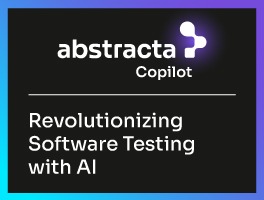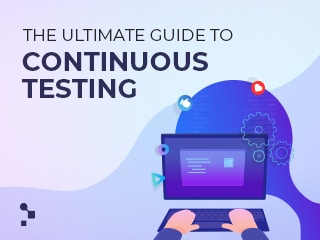Learn how AI is revolutionizing accessibility testing with smarter analysis, realistic user simulations, and automated fixes. Explore key AI-powered tools for inclusive design.
By Martín Bedouret
Accessibility is a key aspect of modern software development and, in general, its implementation in interfaces is not a priority for developers. This is perhaps where accessibility testing takes on a superlative relevance. While accessibility testing used to be done manually, today, artificial intelligence (AI) is opening up new opportunities to optimize this process.
Potential
Artificial intelligence is revolutionizing multiple aspects of software development and accessibility testing is no exception, offering a promising future by enabling more intelligent and deeper analysis. Some of the benefits and possibilities it brings are detailed below:
Advanced Contextual Analysis
AI can analyze user interfaces with a level of contextual understanding that traditional tools cannot achieve. For example, it can identify whether an image needs a specific description, not only because of the absence of an alt tag, but because the image is essential to the understanding of the content.
Simulation of Users with Disabilities
While a tester could attempt to understand the experience of a person with a disability, it is nearly impossible to represent the wide range of disabilities that exist. Instead, AI-powered tools can simulate how a user with a visual, hearing, or motor impairment would interact with an application. This can include simulations of screen readers, keyboard navigation, or tactile responses, and that in itself is a huge step forward.
Machine Learning for Pattern Identification
Another potential of AI is that it can learn from a massive dataset of accessibility barriers already identified and then apply that knowledge to detect similar patterns in new applications. This is used by Axe DevTools, a tool we will look at in detail later.
Automatic Error Correction
It is easy for an AI system to not only identify accessibility barriers but also to propose and even implement fixes automatically based on best practices and previously successful examples. For example, including aria attributes in HTML elements that do not have accessibility attributes, or even adding meaningful descriptions for images using image analysis and recognition.
Tools That Use AI for Accessibility Testing
There are several tools on the market that help testers identify accessibility issues in applications with the help of artificial intelligence. Some of the most prominent ones are:
1. Axe by Deque Systems
Axe is one of the most popular tools for automated accessibility testing. Available as a browser plug-in, this tool allows quick analysis of web pages and applications to identify accessibility issues such as missing alt tags, low color contrast, or keyboard navigation problems.
The company Deque Systems offers other advanced accessibility testing tools and services such as a combination of computer vision techniques and analysis of user interface elements. In this way, they can infer quite accurately what the role of each element on the screen is and thus determine if there are accessibility errors and offer corrections.
2. Aplitools
Although it is not a tool specifically designed for accessibility testing, it can be very useful for contrast analysis in web applications. Applitools applies visual artificial intelligence to analyze possible accessibility contrast issues.
The application has an accessibility issues section that indicates interface elements that do not have sufficient contrast to be discerned by people with visual disabilities. Very clear text, small icons, and transparent images are some examples of accessibility barriers that the tool can detect.
3. Lighthouse
Lighthouse is an audit tool developed by Google that includes an accessibility module, in addition to analyzing other aspects of web performance. The accessibility section is similar to Axe DevTools.
Lighthouse is accessible as a Chrome extension or within the browser’s DevTools and offers practical recommendations for improving accessibility. An excellent feature of the tool is the suggestions for improvements with step-by-step guides.
4. WAVE (Web Accessibility Evaluation Tool)
WAVE is a browser-accessible evaluation tool that provides a graphical view of accessibility issues. It is ideal for those looking for a quick and visual overview of errors in their applications. The application does not yet use artificial intelligence, but the development team is working on some features that do include artificial intelligence:
– Visual identification of errors on the web page.
– Detection of errors such as untagged text, images without descriptions, and malformed header structures.
Conclusion
As a person with a severe motor disability, I face the daily challenge of interacting with user interfaces that do not have an accessible design: scrolling that is impossible without the mouse wheel, pop-ups that vanish, and timeouts that can only be met by those who can type normally on a physical keyboard are some examples of these challenges.
Artificial intelligence is a powerful tool to ensure that we can access the same services and applications as everyone else. Accessibility testing is a crucial part of inclusive software development and artificial intelligence is offering faster and more effective ways to do this.
I believe that the future of accessibility in software lies in AI’s ability to perform more intelligent and contextual analysis, realistic user simulations, and automatically correct problems.
By incorporating AI into accessibility testing, development teams can ensure that their applications are truly accessible to all more efficiently and effectively.
Meet the Author
Martin Bedouret, Cboard Co-Founder of Endava
Martin is an Argentinean Electronics Engineer and he has been a Sr. Tester at Endava for more than 10 years. In 2016 he was diagnosed with ALS and since then many things have changed in his life, especially his way of conceiving technology.
Cboard is the augmentative and alternative communication (AAC) web application he co-founded. It allows users with speech and language conditions (autism, cerebral palsy, etc.) to communicate using symbols and text-to-speech.
Tags In
Related Posts
Testing Generative AI Applications
Testing generative AI applications requires proven expertise. Abstracta enables enterprise-ready adoption—cutting costs and boosting productivity at scale.
New AI Chatbot: How We Built Our Own ChatGPT to Experiment Faster
How to make a chatbot? In this article, we tell you how we did it. Take a look at our unique approach to integrating GPT into our operations through a self-hosted and secure private new AI chatbot system that has enabled our company to experiment…
Search
Contents
Categories
- Acceptance testing
- Accessibility Testing
- AI
- API Testing
- Development
- DevOps
- Fintech
- Functional Software Testing
- Healthtech
- Mobile Testing
- Observability Testing
- Partners
- Performance Testing
- Press
- Quallity Engineering
- Security Testing
- Software Quality
- Software Testing
- Test Automation
- Testing Strategy
- Testing Tools
- Work Culture





